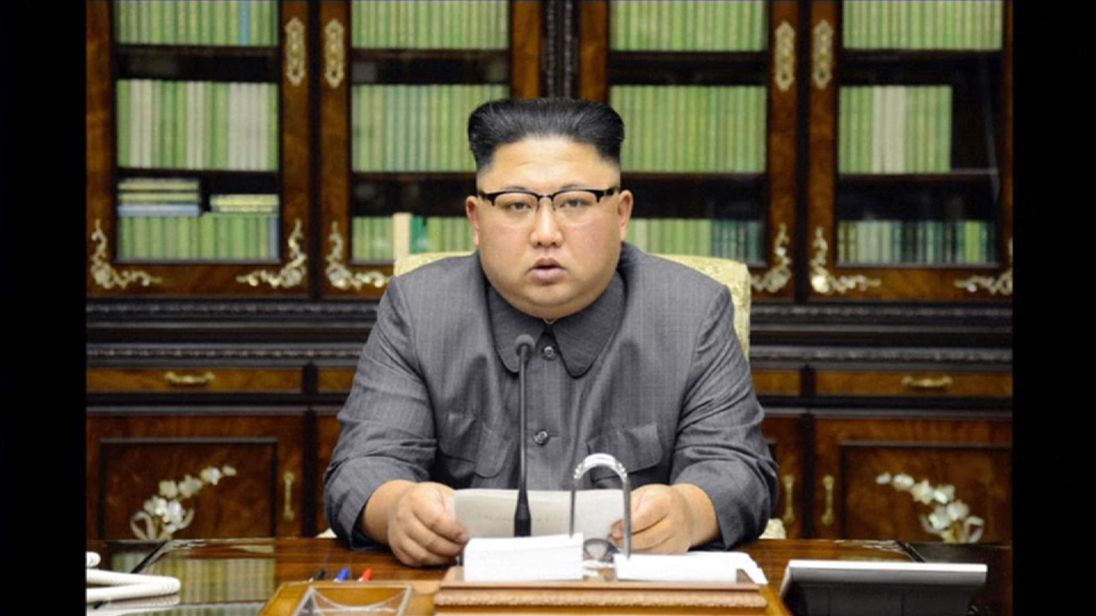“We might be sleep-walking into war with our eyes wide open”
Dr Tsering Topgyal of the University of Birmingham writes for the Birmingham Perspective:
The crisis over North Korea has deepened after it fired a ballistic missile over Japan on September 15, with the missile flying 3,700 km (2,300 miles), reaching an altitude of about 770 km (480 miles), and bringing the US base in Guam within striking distance. The launch came only weeks after the DPRK tested what it claimed to be a miniaturized hydrogen bomb.
US President Donald Trump’s UN speech last Tuesday stoked the fire even more.
See also Trump’s UN Speech and North Korea: From “Axis of Evil” to “Rocket Man”
Puzzle of Impoverished Nation Seeking Nuclear Capabilities
Perhaps the most compelling rationale for North Korea’s actions is the Kim Jong-un regime’s insecurities. A credible nuclear capability is seen as the only deterrence against perceived external threats. In inter-Korean terms, it is only the only way for North Korea to make up for the increasing asymmetry in economic and conventional military capabilities.
Most importantly, it is a security guarantee against perceived American regime change policies. Trump’s UN speech, vowing to “totally destroy North Korea” will serve only to heighten such fears and advancing North Korea’s schedule for developing warheads and delivery systems. These constitute the ultimate Anti-Access, Area Denial (A2/AD) strategy against America.
While the nuclear weapons program was viewed previously as a bargaining chip, Kim Jong-un appears to have decided to pursue nuclear-strike capability as an end in itself. Politically, nuclear power status will give the regime symbolic power to counter-act South Korea’s ideological and soft power influence and blunt domestic opposition. The nuclear and missile programmes will boost national identity. And another political benefit, largely ignored, is the strategic autonomy and parity that North Korea will gain vis-à-vis China and Russia.
Strategic Perils
The crisis stoked by North Korea’s nuclear and missile programme is pregnant with strategic risks for all involved. First, a military clash becomes more likely as North Korea closes on the capability to strike the American mainland. This will draw in South Korea and Japan, as North Korea is sure to attack the American military bases there as well as South Korean and Japanese strategic assets. Given the strategic asymmetry, DPRK and the Kim regime will likely disappear, but not before wreaking substantial damage to life and property in both Korean states.
Second, North Korea could use the cover of nuclear deterrence to coerce North Korea, drawing in America. Given the place of Japan in Korean nationalism and propaganda, it too will come under attack and be forced to respond.
China is the wild card in the above scenarios. It will face the dilemma of supporting North Korea and jeopardizing its economic development and rise or deserting its ally with some unsavoury strategic consequences. If China enters the war on North Korea’s side, we will have a replay of the Korean War (1950-53) on our hands. This will transform the complexion of the US-China power-transition with global ramifications.
War is not on the immediate horizon as contemplation of the consequences is sobering. Yet in the thick of nuclear and missile tests, frequent military exercises, and fiery rhetoric — all of which is taking place in the context of low trust and little communication — misperception and accidents could cause a war that no one really wants.
A Way Out?
Both bilateral and multilateral approaches have failed to contain the crisis since 1993.
US-North Korea bilateral talks and the Agreed Framework (1993-95) collapsed under the weight of multilateral pressures. The Six-Party Talks (2005-2009), hosted by China, did not fare any better. The carrot of economic and energy aid failed to produce results, nor did the stick of economic sanctions and condemnation. US-South Korean military exercises have been ineffective, merely playing into North Korean, Chinese and Russian hands. So, what is left to try?
First, China and Russia could impose real economic pain on North Korea, fortifying the UN sanctions rather than undermining them.
The US could take a dramatic leap of faith and hold direct talks with North Korea with assurances of diplomatic relations. This could be complemented by multilateral talks, where Japan and South Korea could be more helpful by prioritising DPRK denuclearization over other emotive bilateral issues.
Finally, the military option in the form of surgical strikes to take out North Korea’s leadership or nuclear facilities exists, but these are fraught with risks and should be reserved for the very last resort. All of these steps are unpalatable to one or more parties, which means that we might be sleep-walking into war with our eyes wide open.

